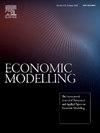在没有价格数据的情况下估计收入边际效用的收入弹性的新方法
IF 4.7
2区 经济学
Q1 ECONOMICS
引用次数: 0
摘要
收入边际效用的收入弹性、ω和价格弹性是微观和宏观经济政策分析的关键参数,包括可计算的一般均衡模型、成本效益分析和公共经济决策。通常,ω的值是通过使用价格、数量和收入数据估计需求系统得出的。然后根据ω的估计值计算价格弹性。然而,大多数家庭支出调查没有单独收集价格数据,因此不可能直接估计ω和价格弹性。这一限制在使用住户调查数据进行消费者需求分析时带来了重大挑战。Clements等人(2022)最近的一项研究使用澳大利亚家庭支出调查数据,通过采用近似值ω = - 2来估计缺乏价格数据的价格弹性,当价格数据可用时,ω = - 2在消费者需求文献中经常被引用。在此基础上,本文介绍了一种估算ω和价格弹性的新方法,并利用斯里兰卡的家庭收入和支出调查数据展示了其应用。估计的ω值然后被用来检验著名的弗里施(1959)猜想和庇古(1910)定律。两者都得到了数据的有力支持。本文章由计算机程序翻译,如有差异,请以英文原文为准。
A new method to estimate the income elasticity of marginal utility of income in the absence of price data
The income elasticity of marginal utility of income, ω, and price elasticities are key parameters in both micro- and macroeconomic policy analyses, including computable general equilibrium modeling, cost-benefit analysis, and public economics decision-making. Typically, the value of ω is derived by estimating demand systems using price, quantity, and income data. Price elasticities are then calculated based on the estimated value of ω. However, most household expenditure surveys do not separately collect price data, making it impossible to estimate ω and price elasticities directly. This limitation creates significant challenges when using household survey data for consumer demand analysis. A recent study by Clements et al. (2022) used Australian household expenditure survey data to estimate price elasticities in the absence of price data by adopting an approximate value, ω = −2, which is frequently cited in the consumer demand literature when price data are available. Building upon this, the present paper introduces a new method for estimating ω and, in turn, price elasticities and demonstrate its application using Sri Lanka's Household Income and Expenditure Survey data. The estimated ω values are then used to test the well-known Frisch (1959) conjecture and Pigou's (1910) law. Both are strongly supported by the data.
求助全文
通过发布文献求助,成功后即可免费获取论文全文。
去求助
来源期刊

Economic Modelling
ECONOMICS-
CiteScore
8.00
自引率
10.60%
发文量
295
期刊介绍:
Economic Modelling fills a major gap in the economics literature, providing a single source of both theoretical and applied papers on economic modelling. The journal prime objective is to provide an international review of the state-of-the-art in economic modelling. Economic Modelling publishes the complete versions of many large-scale models of industrially advanced economies which have been developed for policy analysis. Examples are the Bank of England Model and the US Federal Reserve Board Model which had hitherto been unpublished. As individual models are revised and updated, the journal publishes subsequent papers dealing with these revisions, so keeping its readers as up to date as possible.
 求助内容:
求助内容: 应助结果提醒方式:
应助结果提醒方式:


